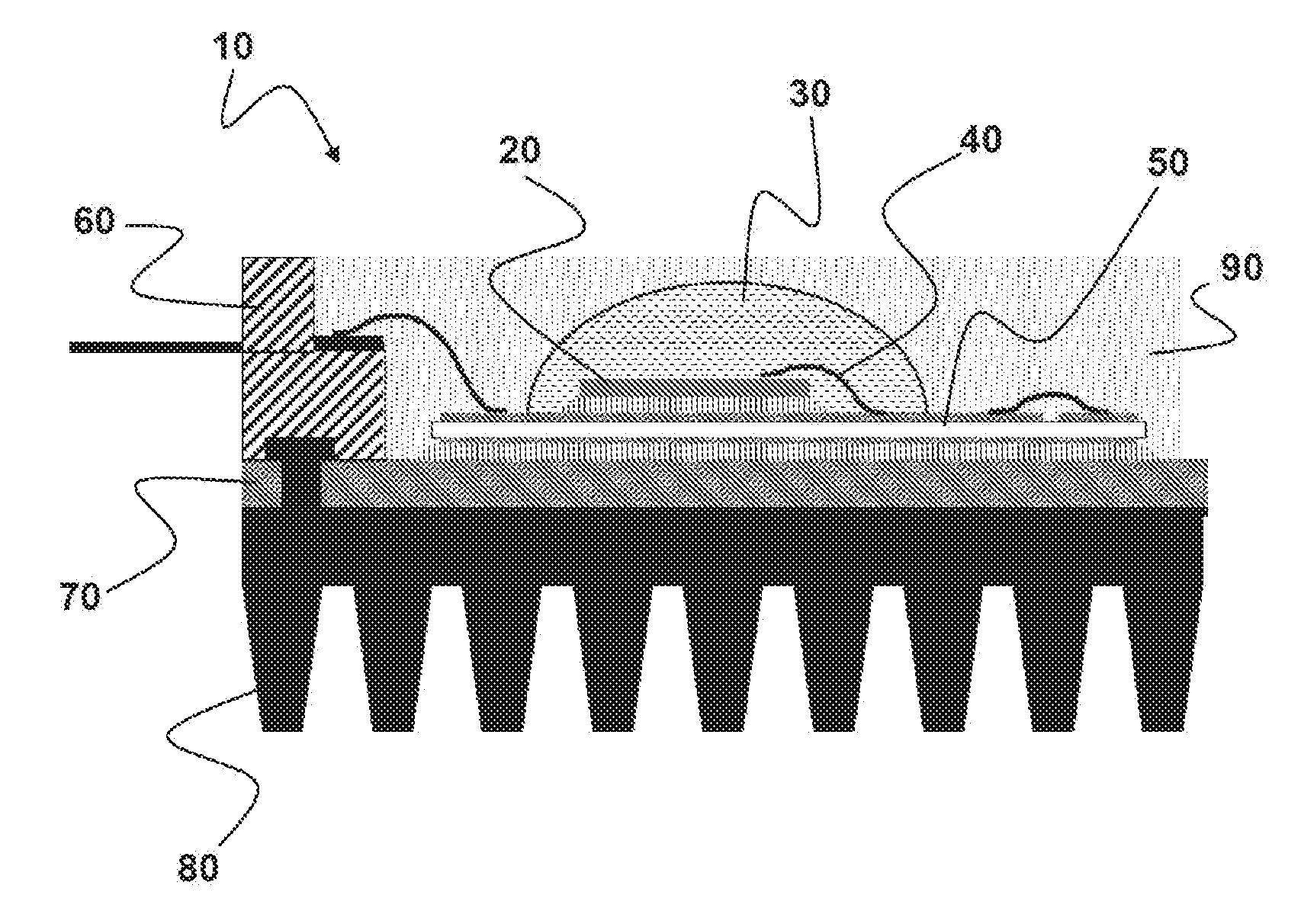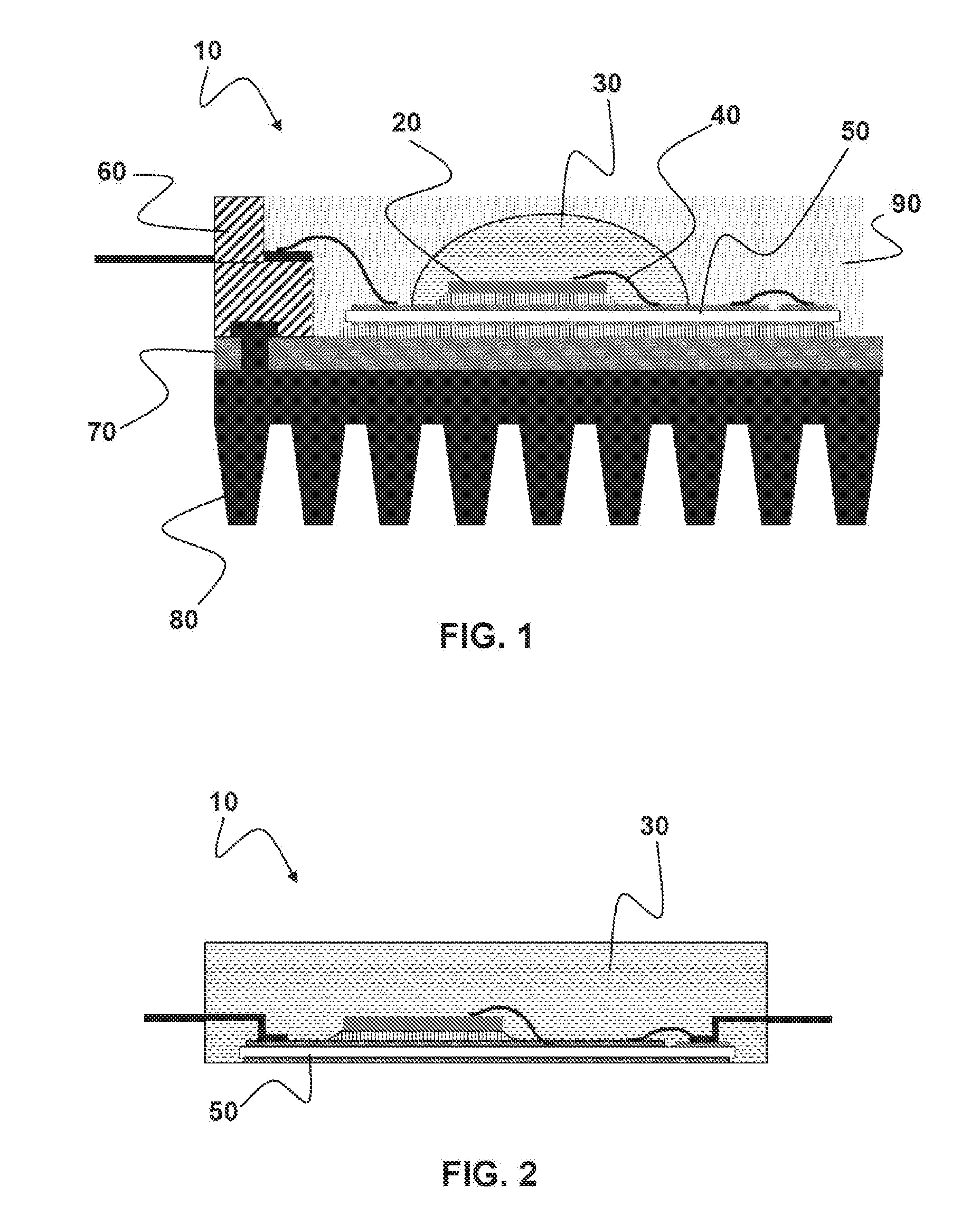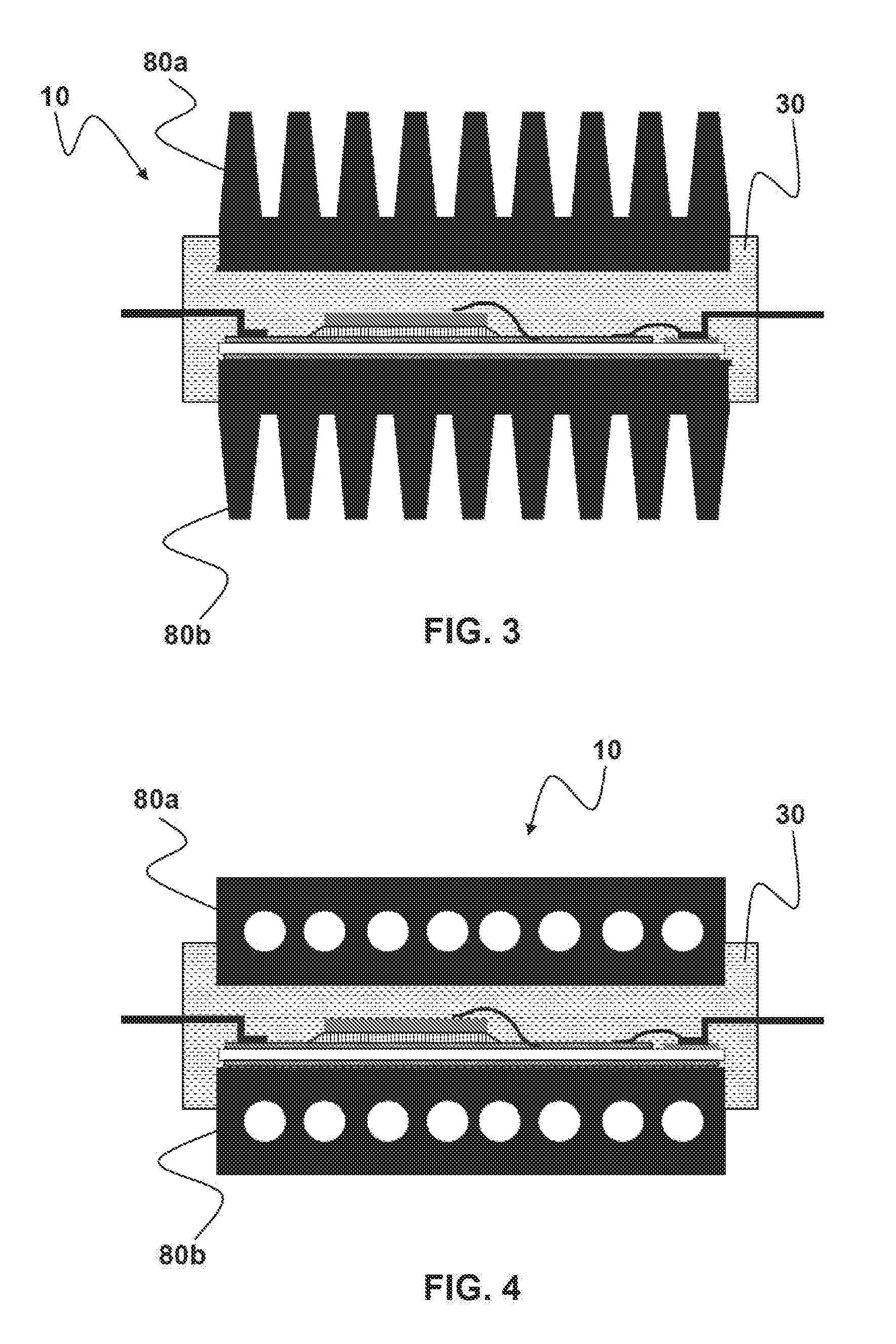Semi-conductor module with an encapsulating cement mass that covers a semi-conductor component
- Summary
- Abstract
- Description
- Claims
- Application Information
AI Technical Summary
Benefits of technology
Problems solved by technology
Method used
Image
Examples
Embodiment Construction
[0018]The underlying rationale of the invention is to use cement as a purely inorganic, metal-free material for encapsulating semi-conductor components. The focus in this context is on an adapted thermal expansion between a semi-conductor (CTE typically 2.5-4 ppm / K) and the encapsulating material to arise.
[0019]Cements are oxidic materials and, as inorganic and non-metallic building materials, possess combinations of properties that are advantageous for encapsulating semi-conductors, namely high electrical insulation (20-100 kV / mm), relatively good thermal conductivity (1-2 W / mK), and low thermal expansion (2-10 ppm / K). Cements are usually made from natural raw materials, limestone, clay, and marl, and can comprise quartz sand and iron oxide-containing substances to improve sintering. A cement that is particularly preferably used for the present invention can, for example, be produced advantageously from the basic raw materials magnesium oxide, zirconium silicate, and magnesium phos...
PUM
 Login to view more
Login to view more Abstract
Description
Claims
Application Information
 Login to view more
Login to view more - R&D Engineer
- R&D Manager
- IP Professional
- Industry Leading Data Capabilities
- Powerful AI technology
- Patent DNA Extraction
Browse by: Latest US Patents, China's latest patents, Technical Efficacy Thesaurus, Application Domain, Technology Topic.
© 2024 PatSnap. All rights reserved.Legal|Privacy policy|Modern Slavery Act Transparency Statement|Sitemap



